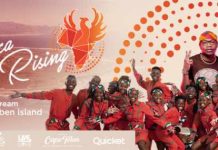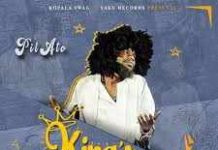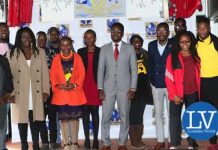Hi people,
Today we are on the big question: What have I actually done for the Arts since I became Chairman of the National Arts Council? This response is rather long, but please bear with me. If you read nothing else, please just read the P.P.S at the end, and respond to my request. Please.

Before I joined the Council, I was approached by William Miko, who had just finished running the CICIBA Project to help him with a funding proposal to EU for the culture sector. There were several pieces that had to be put together, covering museums, heritage and the Arts. I worked on this proposal the whole night as I was leaving to attend to a consultancy in Lesotho the next day. This proposal was successful and resulted in the Zambian cultural sector receiving 2.3 million Euro. This money was used to rehabilitate the Livingstone museum, buy equipment for the Moto Moto museum, produced a catalogue for Copperbelt Museum, established a catalogue system for Lusaka museum. It also assisted the National Heritage Conservation Commission, computerize their database, acquire some specialized equipment , protect the Namukolo church, Kalomo administrators house, Mwela Rock art paintings, and to delineate and protect the Zambezi Source, and other sites around the country. The money also assisted artists to complete an amphitheatre in Chipata and conduct skills training on the Copperbelt and Southern province , purchase of offices in Kitwe, helped some artists in Kasama to buy equipment, 500 artists in all provinces received business training, 20 craftswomen went to Ghana for learning experience, 60 artists (including JK) to go to South Africa to perform at the SADC Festival and another 30 went to Mozambique, Yezi Arts festival, and roughly 998 artist received assistance in one way or another through arts and their cultural associations. From this money, Zambia pioneered an arts business training manual which is now used by ILO all over Africa, the money also went to the completion of the National Cultural Policy. This is still the largest amount of money ever received by this country in the arts and culture sector and am proud to say, if I had not sat down and worked on that proposal all night, this might not have happened. This is the project I went to run when I stepped aside from Chairing the National Arts Council. As a result of the performance of this project, Zambia was elevated to the top five of the ACP countries for funding and chosen to be a pilot country for 2 important EU projects.(More on this later)
When I re-joined the Council as Chair in 2004, the budget for the Council from Government was K100 million (old kwacha) or hundred thousand kwacha in today’s money. This budget was supposed to enable the Council pay its employees, cover all its overheads (fuel, stationary purchase and maintenance of equipment), pay its statutory obligations, and develop the Arts nationwide. As you can imagine this was a near impossible task with this amount of money even in those days. Please note also that K100m was one budget line item for fuel or stationary for some government departments, but it was supposed to be sufficient to develop the Arts nationwide.
Our major funder at this time was the Norwegian Government, funding the Council for specific programmes (the Ngoma Awards being one), direct funding to Arts Associations, and some of our daily operations. Without this assistance, the Council would not have survived. But the Norwegian funding had a shelf-life. At this time, an incident happened that gave me a jolt. While in Cuba for the World Conference on Culture, I met with the National Arts Council of Cuba, I (an uninformed participant in institutionalized donor-dependency) proudly announced what I thought was an achievement on our part, that two-thirds of our funding came from the Norwegian Government. The members of the Cuban Arts Council looked at me with a mixture of pity and consternation, then asked me, their voices full of concern and puzzlement; how can you let a foreign government fund the development of your culture? The truth of this hit me like a sledge hammer. If my government created the National Arts Council, was it not obligated and only right that Government should be the major funder and supporter of the development of our own arts and culture? Thus begun my fight to raise the Government budget support to the Arts. Within my first term of office as Chairman, we managed to raise government budget support from K100m to K1.1billion old kwacha (many thanks to Hon. Katherine Namugala and Hon. Kaingu) . By the end of my second term of office, the Council managed to raise Government budget support to K1.7M and K2m new kwacha respectively. For the first time in the history of the National Arts Council, we now have a separate budget for the running of the Council Secretariat, and separate budget for programmes for Arts development. (Many thanks to Hon. Sylvia Masebo who insists on treating the arts as an important part of the Ministry). In addition, approximately K10m is available under the Department of Culture, and a K3.5m has been set aside for the establishment of the Arts, Culture and Heritage Commission.
Let me also mention that while we were still fighting to raise funding levels from Government, the Norwegian funding came to an end. I travelled to Norway (the National Arts Council did not fund this trip) and negotiated for an exit funding period as we tried to obtain survival funding levels for the Council and the Arts from Government. The result was that, because of my negotiations with the Foreign Ministry of Norway, the National Arts Council was the only institution in the region for which funding was continued for another three years. This gave us breathing space as we lobbied government for more funds.
In regard to policy and legislation, which was particularly weak in regard to the arts when I became Chair , let me say that I have been actively involved in advising, developing and reviewing Policies and legislation and can point to a sentence , a paragraph or a whole sections in the following: The National Film Policy (2012), The National Intellectual Property Policy and implementation Framework (2011), The Cultural Policy Template for Cultural Practitioners in Africa (2010), National Prisons HIV and AIDS Policy (2009)(Arts in prisons are important means of helping inmates) , National Social Welfare Policy (2008), National ICT Policy (2007), Review of National Cultural Policy (2006) (I helped the Department write the proposal to UNESCO that funded this review), National Child Policy (2006),( the section on children and art is mine) National Education Policy (2005),(making art an examinable subject) National Culture Policy (2003) (I lobbied for the approval of this policy after it had sat on the shelf for 10 years). In regard to legislation I have been involved in Development and finalization of the Arts, Culture and Heritage Bill (2013) , I conducted a review and made recommendations regarding all Zambian Arts, Culture and Heritage legislation and policy for UNESCO (2012), Review of legislation on Intellectual Property (2011), Review of legislation on Indigenous Knowledge Systems (2011), Review of legislation on Patents and Designs (2011), Review of the Constitution of Zambia as a delegate of the National Constitution Review Conference (2007-2010) ensuring that the practice and enjoyment of the arts are included as a human right), Development of the Child Act (2010), Review of the National Arts Council Act (2006), Review of the Theaters and Cinematography Act (2002). In regard to UN processes I have presented to Zambian Arts Associations on the State Party Process (2013), participated in the State Party Report process on the Convention of the Rights of the Child (2010), Analysis on the Domesticating of the Convention of the Rights of the Child for the Ministry of Justice (2010), Convention on Economic, Social and Cultural Rights (2003). I personally lobbied for the inclusion of and the writing of the Chapter on Arts and Culture in the 5th National Development Plan, Chapter on Arts and Culture in the 6th National Development Plan (2011-2015) and the Vision 2030, the writing of the Chapter on Arts and Culture in the 6th National Development Plan (2011-2015).
Since independence, the arts have had no tertiary institution where artists can obtain higher education or even vocational skills. This has bothered me a great deal as it disadvantages our artists in many ways. The Evelyn Hone College does not teach art in itself, but instead teaches art pedagogy (the skill of teaching of art). Am proud to say that recommendations of a team in which I was part, acting on an idea proposed by my Council, was approved by Cabinet last year and will see the former ZAMIM Campus in Chilanga transformed into a College of New Media and Arts.
So what have I achieved? And what is the importance of all this?
I have only concentrated on the ‘big picture” aspects of what I have achieved, because one of the major functions of the National Arts Council is to advise government on policy and other related matters. Without policy and legislation, it is difficult to develop and implement Council functions and programmes, engage government or the global players out there.
From the outset I have believed my role and therefore my legacy was to address the big picture so that the details could then fall into place. I believe I have played a role in setting the stage for arts development, in regard to policy, legislation, national planning, now finally the creation of a more suited structure to implement and manage arts development in the form of the Arts, Culture and Heritage Commission. Like the woman who plants a mango tree on the side of the road for others to eat from and shelter under, I am satisfied that others will reap the benefits of my efforts. I and my Council members have managed to raise funding to levels where some impact will now be seen. We have managed to review and develop policy and legislation for the culture and Arts Sector to begin to function in the mainstream of development. We have now managed to create a Bill that will bring all the players and funding in one pot so that the sector is better coordinated. We have managed to obtain approval for the creation of a tertiary institution for the arts (and by the way also negotiated 60 scholarships in the arts for the first time since Wesley Kaonga’s group went to Hollywood over 30 years ago). My first public speech when the PF Government came to power was an appeal to place the arts sector in an economic Ministry so that the sector can finally contribute to development. The response was the Ministry of Tourism and Arts. The arts are finally in a priority sector as opposed to a social sector. This is major leap.
In short, now we can hope to make some meaningful impact in the Arts. What Saboi and her cronies should really be shouting about is making sure that the budgeted money is released to the sector, and the National Arts Council and the Department of Culture are held accountable for its expenditure and management (beware-sometimes not all the money promised in the budget is released from government treasury).
With the stage now set in terms of policy, legislation and funding, Saboi, please use your well oiled lobbying machinery to ensure that the National Arts Council and the Department of Culture, together with artists come up with a mechanism to be accountable to you.
Please shout about all the International Conventions that we have yet to sign that will help you access more global funds and networks.
Most importantly, please shout very loud that the Arts, Culture and Heritage Commission be passed in this sitting of Parliament, so that all the money meant for the arts is actually spent on the arts and so that you have a better coordinated sector that contributes to national development and so that Mulenga Kapwepwe and the National Arts Council can be finally and permanently removed from the arts landscape.
P.S. Did I record any failures during this time of my tenure? Yes I did and there are many failures I can recall. And if you want me to go into that I will. The hot question though has been, what did I achieve during my tenure, that is what I have stuck to.
P.P.S The Paperwork for the registration of Chiduku Beats as a business and trademark are almost complete. I am requesting some help from interested parties to design the Chiduku Beats Logo! The winner will receive a signed Deluxe Pack of the first three Chiduku Beats CDs (Shimasta and Mozegater, Tasila and Glorious Band) as a prize! Let’s have some fun. Remember I will also be looking for Chiduku Beats Board Members, applications are being accepted! So just drop me a note explaining why you think you could contribute to building the most innovating record label in Zambia. You just need to be passionate, have an ability to dream and create something that has never been seen or done before! And be prepared to serve for at least 14 years!

 JOIN DRIVERN TAXI AS PARTNER DRIVER TODAY!
JOIN DRIVERN TAXI AS PARTNER DRIVER TODAY!










